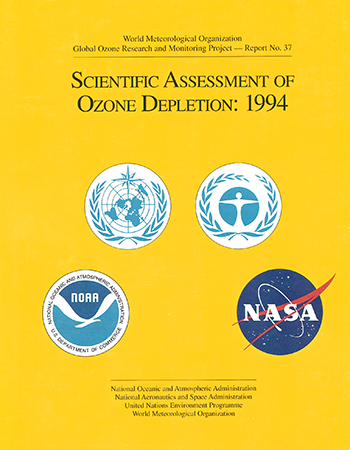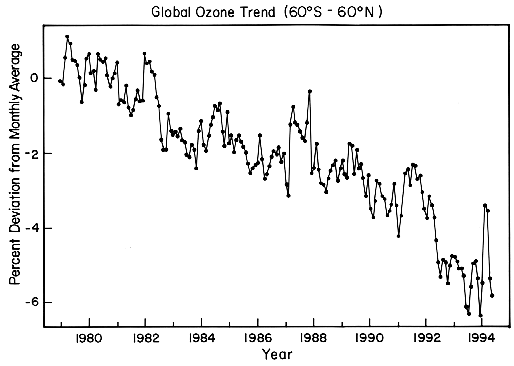Scientific Assessment of Ozone Depletion: 1994
Common Questions About Ozone

4. Can Changes in the Sun's Output Be Responsible for the Observed Changes in Ozone?
Stratospheric ozone is primarily created by ultraviolet (UV) light coming from the Sun, so the Sun's output affects the rate at which ozone is produced. The Sun's energy release (both as UV light and as charged particles such as electrons and protons) does vary, especially over the well-known 11-year sunspot cycle. Observations over several solar cycles (since the 1960s) show that total global ozone levels decrease by 1-2% from the maximum to the minimum of a typical cycle. Changes in the Sun's output cannot be responsible for the observed long-term changes in ozone, because these downward trends are much larger than 1-2%. Further, during the period since 1979, the Sun's energy output has gone from a maximum to a minimum in 1985 and back through another maximum in 1991, but the trend in ozone was downward throughout that time. The ozone trends presented in this and previous international scientific assessments have been obtained by evaluating the long-term changes in ozone concentrations after accounting for the solar influence (as has been done in the figure below).
